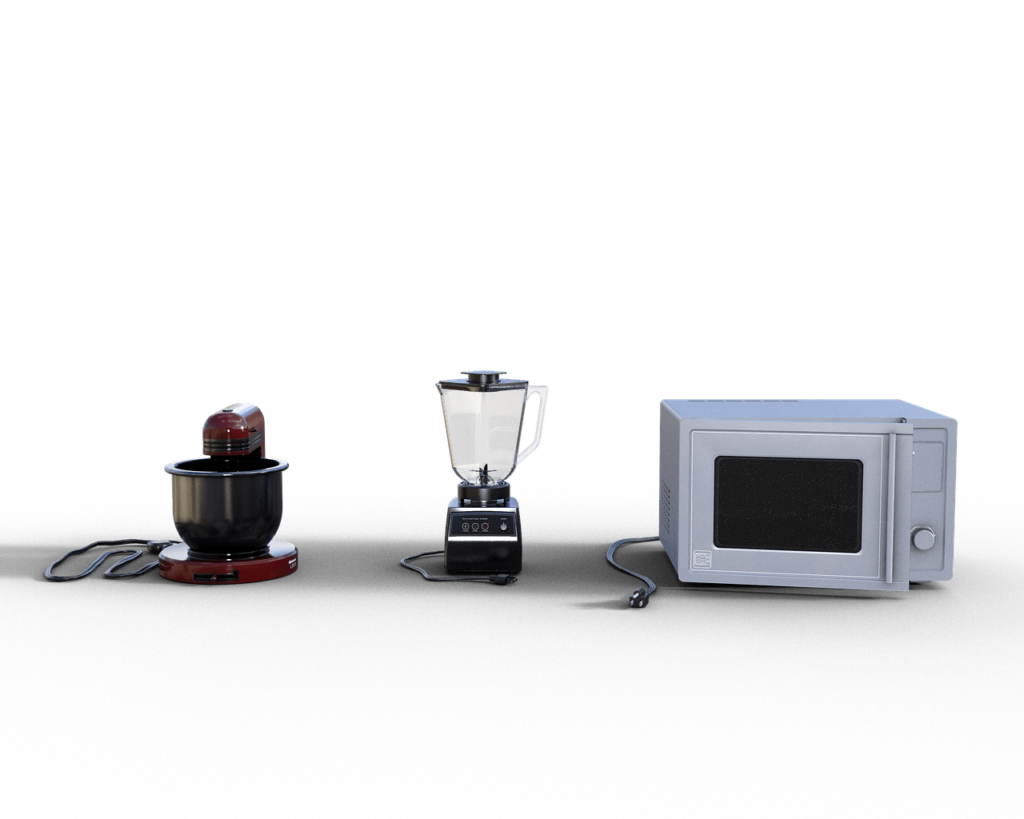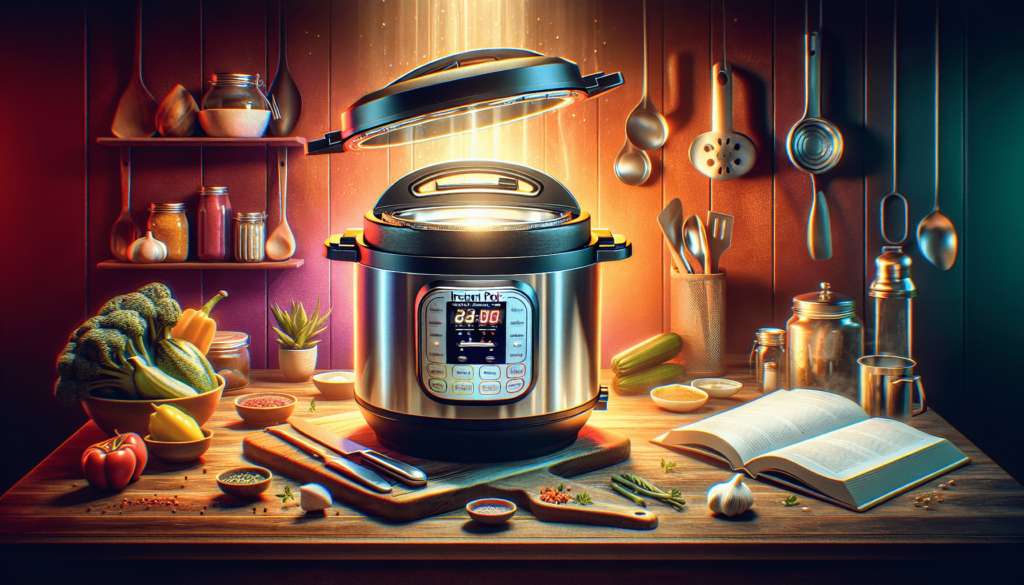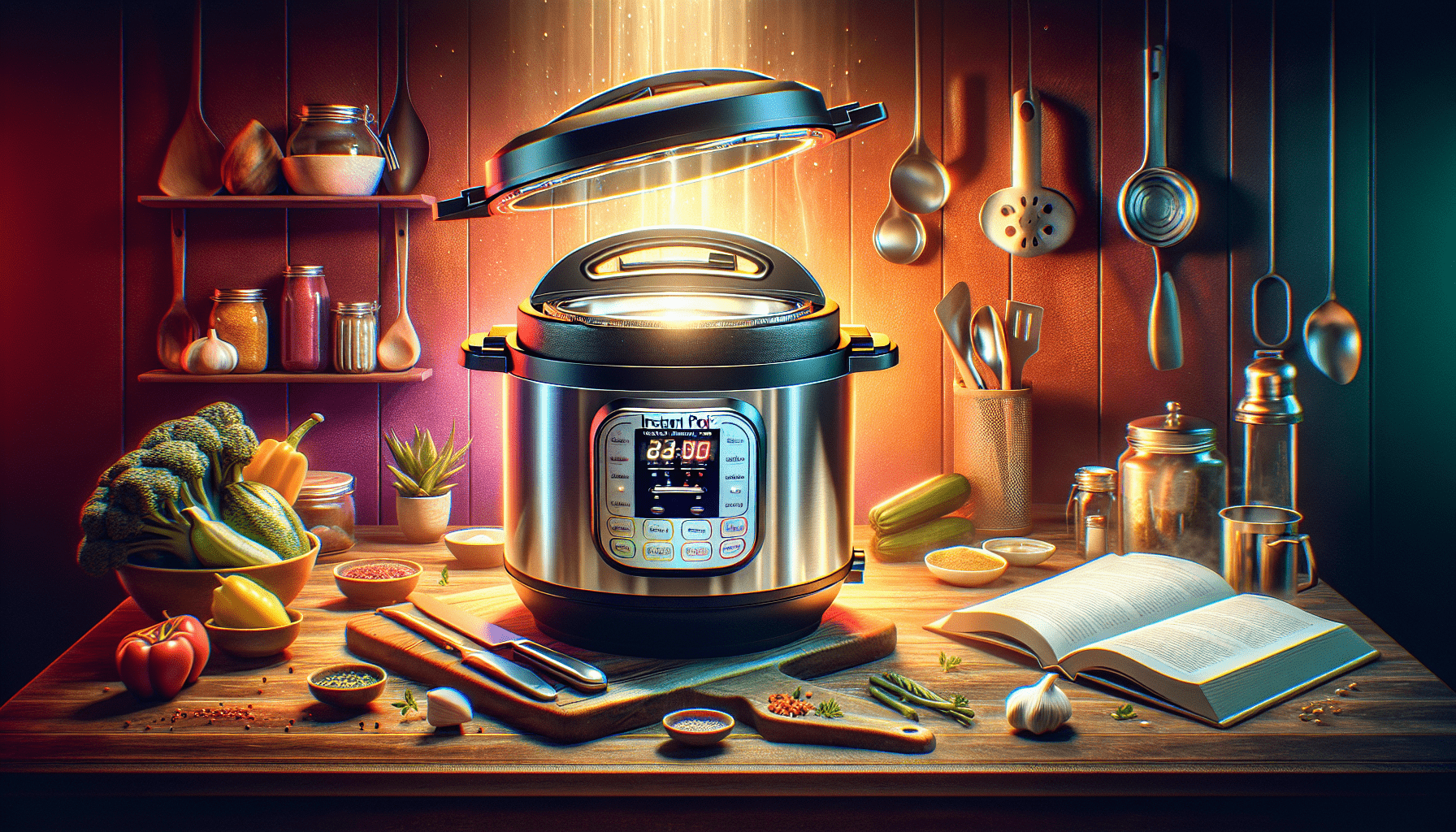Are you a curious home cook, eager to try out your brand-new Instant Pot? Then, look no further! In this article, we will guide you through the exciting adventure of using an Instant Pot for the first time. With simple step-by-step instructions and helpful tips, you’ll be amazed at how easily you can whip up delicious meals using this versatile kitchen appliance. So, let’s get started on this culinary journey and unlock the potential of your Instant Pot!

Introduction
What is an instant pot?
An instant pot, also known as a multi-cooker, is a versatile kitchen appliance that combines the functions of a pressure cooker, slow cooker, rice cooker, steamer, yogurt maker, and more. It is designed to simplify cooking and save time in the kitchen. With its advanced technology and a wide range of cooking programs, an instant pot offers convenience and efficiency in preparing delicious meals.
Why use an instant pot?
Using an instant pot can revolutionize your cooking experience. Traditional cooking methods often require constant monitoring and longer cooking times. However, an instant pot takes the guesswork out of the equation. It offers precise temperature control, consistent heat distribution, and automated cooking programs. This means you can achieve perfectly cooked meals with minimal effort and in a fraction of the time compared to conventional methods.
Benefits of using an instant pot
There are several benefits to using an instant pot in your kitchen. Firstly, it saves time by reducing cooking times significantly. The pressurized cooking environment allows food to cook faster while retaining its flavors and nutrients. Additionally, an instant pot can replace multiple kitchen appliances, decluttering your countertops and saving money. It is also energy-efficient, consuming less power than conventional ovens or stovetops. Finally, an instant pot allows for hands-off cooking, freeing up your time for other tasks while the pot does the work for you.
Unpacking and Setup
Unboxing the instant pot
When you first receive your instant pot, it’s an exciting moment. The instant pot comes securely packaged in a box. Start by carefully opening the box, making sure not to damage any contents inside. Remove all the components of the instant pot, including the main unit, inner pot, lid, accessories, and instruction manual.
Removing packaging materials
Once you’ve unboxed the instant pot, it’s important to remove any packaging materials that may be present. This includes any plastic wrap, foam padding, or stickers that might be attached to the pot or its accessories. Taking the time to remove these materials ensures that they won’t interfere with the pot’s performance or safety.
Assembling the pot and accessories
Assembling your instant pot is a straightforward process. Place the inner pot inside the main unit, making sure it is properly aligned and secure. Attach the lid to the pot, ensuring that it fits snugly. Depending on the model, you may have additional accessories such as a steam rack or silicone sealing ring. Follow the manufacturer’s instructions to assemble these accessories correctly.
Checking for any damage
Before using your instant pot for the first time, it’s crucial to check for any damage that may have occurred during shipping or handling. Inspect the pot and its components for any cracks, dents, or defects. Pay close attention to the sealing ring, as it is an essential component for achieving proper pressure cooking. If you notice any damage, it’s important to contact the manufacturer for assistance or a replacement.
Cleaning and Preparing
Washing the inner pot and accessories
Before using your instant pot for the first time, it’s essential to thoroughly clean the inner pot and any included accessories. Remove the inner pot and any removable accessories and wash them with warm soapy water. Use a sponge or non-abrasive brush to remove any food particles or residue. Rinse the pot and accessories thoroughly to ensure all soap is removed.
Drying the pot and accessories
After washing, it’s important to dry the inner pot and accessories completely. You can use a clean dish towel or let them air dry. Moisture can interfere with the pot’s performance, so ensuring they are thoroughly dried is important for optimal cooking results. Avoid using abrasive cloths or towels that could scratch the surfaces of the pot or accessories.
Ensuring all components are clean and dry
Once the inner pot and accessories are dry, double-check that all components are clean and ready for use. Inspect the pot’s interior and exterior, as well as the lid and sealing ring, for any remaining dirt or residue. Make sure there are no food particles stuck in the pressure release valve or other crevices. Cleaning all the components thoroughly ensures that your food will be cooked in a clean and hygienic environment.
Prepping ingredients for cooking
Before you start cooking with your instant pot, it’s important to prepare your ingredients. Chop vegetables, trim meats, and gather any spices or additional elements needed for your recipe. Following this step will save you time during the actual cooking process, allowing you to simply add the prepared ingredients into the pot when needed.
Understanding the Control Panel
Locating the control panel
The control panel of your instant pot is where you’ll find various buttons and controls that allow you to operate the appliance. Locate the control panel, usually located on the front of the main unit. The exact placement and layout of the control panel can vary depending on the model of the instant pot you have.
Identifying different buttons and functions
Take a moment to familiarize yourself with the different buttons and functions on your instant pot’s control panel. These buttons typically include options like “Pressure Cook,” “Saute,” “Slow Cook,” “Yogurt,” and more. Each button represents a specific cooking program or function that you can select based on your recipe’s requirements. By understanding the functions, you’ll be able to choose the appropriate cooking program for your needs.
Learning about the display screen
Many instant pot models have a digital display screen on the control panel. This screen provides information regarding the pot’s settings, such as cooking time, pressure level, and temperature. Familiarize yourself with the display screen and learn how to interpret the information it provides. This will help you keep track of your cooking progress and make any necessary adjustments throughout the process.

Adding Liquid and Ingredients
Determining the required amount of liquid
Adding the right amount of liquid is crucial when using an instant pot. The exact amount of liquid required may vary depending on the recipe and the type of food being cooked. As a general rule, most recipes require at least 1 cup of liquid to create the necessary steam and pressure. However, it’s essential to refer to your specific recipe for the recommended amount of liquid.
Adding the liquid to the pot
Once you have determined the required amount of liquid, carefully pour it into the inner pot of your instant pot. Use a measuring cup or container with marked measurements to ensure accuracy. Pour the liquid evenly around the pot, making sure not to exceed the maximum fill line indicated on the inner pot. Adding too little or too much liquid can affect the cooking process and result in undercooked or overcooked food.
Adding ingredients according to the recipe
After adding the liquid, it’s time to add your ingredients to the instant pot. Follow the recipe’s instructions for the correct order and placement of ingredients. Layering ingredients properly is essential for even cooking. For example, place denser ingredients like meat at the bottom, followed by vegetables and other items that cook more quickly. Make sure not to exceed the maximum fill line of the instant pot to prevent any potential issues during the cooking process.
Sealing and Venting
Closing the lid properly
Before cooking with your instant pot, it’s crucial to ensure that the lid is properly closed and sealed. Align the arrows on the lid and the main unit, and then turn the lid clockwise until it locks into place. The lid should fit securely without any gaps or wobbling. Properly closing the lid is essential to create the necessary seal for pressure cooking.
Ensuring the pressure release valve is in the correct position
The pressure release valve plays a crucial role in the cooking process of the instant pot. It controls the release of steam and pressure inside the pot. Before starting the cooking process, make sure the pressure release valve is in the sealing position. In most models, this means pushing the valve towards the sealing icon. Ensuring the valve is in the correct position will prevent any steam from escaping and create the necessary pressure for cooking.
Understanding sealing and venting options
Instant pots typically offer two main sealing and venting options: “Sealing” and “Venting.” The sealing option is used for pressure cooking and should be selected when you want to trap the steam inside the pot. The venting option is used for quick release of pressure and should only be used when the recipe explicitly calls for it. Understanding the difference between these options is essential to ensure the proper cooking method is employed for your recipe.
Selecting Cooking Programs
Exploring different cooking programs
An instant pot offers a variety of cooking programs designed to cater to various types of recipes. Take some time to explore the different cooking programs available on your instant pot. These programs can include options like “Pressure Cook,” “Slow Cook,” “Steam,” “Saute,” “Yogurt,” and more. Understanding the purpose and function of each program will allow you to make the best choice for your specific recipe.
Choosing the appropriate program for the recipe
Once you’re familiar with the available cooking programs, select the one that best suits your recipe. Consider the cooking time, desired texture, and method required for your dish. For example, if you’re preparing a stew or curry, the “Pressure Cook” program is typically the best choice as it allows for thorough cooking and tenderizing of meats. Whereas, for recipes that require slow and gentle cooking, such as soups or bone broths, the “Slow Cook” program is a suitable option.
Adjusting cooking time and pressure settings
In addition to selecting the appropriate cooking program, you may need to adjust the cooking time and pressure settings. Most instant pots allow users to customize these settings based on personal preferences and recipe requirements. Refer to the recipe for the recommended cooking time and pressure level. Use the controls on the instant pot to make any necessary adjustments before starting the cooking process. This customization ensures your food is cooked to perfection.
Starting the Cooking Process
Making sure the pot is properly plugged in
Before starting the cooking process, ensure that your instant pot is properly plugged into a functioning electrical outlet. Check that the power cord is securely connected to both the pot and the outlet. This step ensures a steady supply of power throughout the cooking process and prevents any interruptions that could affect the cooking time or temperature.
Setting the cooking time and pressure level
After plugging in the instant pot, it’s time to set the cooking time and pressure level. Refer to your recipe for the recommended cooking time and pressure. Use the control panel and buttons to adjust these settings accordingly. This step allows you to achieve the desired results for your dish, whether you’re aiming for a quick meal or a slow-cooked masterpiece.
Waiting for the pot to reach the desired pressure
Once you’ve set the cooking time and pressure level, it’s time to let the instant pot work its magic. After closing the lid, the pot will begin the process of building pressure. This may take a few minutes, depending on the recipe and the amount of liquid inside. During this time, it’s important to be patient and avoid opening the pot prematurely. The pot will display a progress indicator or countdown timer, indicating that it’s on its way to achieving the desired pressure.
Natural Release vs. Quick Release
Understanding natural release
Natural release refers to allowing the pressure inside the instant pot to decrease naturally over time. After the cooking process is complete, the pot will automatically switch to a “Keep Warm” mode. At this point, you can choose to let the pressure release naturally, which usually takes around 15-20 minutes. During natural release, the pot slowly depressurizes on its own, allowing the flavors to meld and the food to continue cooking gently.
Understanding quick release
Quick release, on the other hand, refers to manually venting the steam and pressure from the instant pot. After the cooking process is complete, carefully position the pressure release valve to the venting position, typically indicated by a steam icon and/or an arrow pointing away from the sealing icon. Quick release allows the pressure to escape rapidly, shortening the overall cooking time. It is important to note that quick release can cause hot steam to shoot up from the pot, so exercise caution and keep your face and hands at a safe distance.
Choosing the right release method for the recipe
When deciding between natural release and quick release, consider the recipe’s requirements and your own preferences. Some dishes, such as meats or stews, might benefit from a natural release as it allows for additional tenderization and melding of flavors. On the other hand, recipes that call for delicate ingredients or those that require immediate cooling may require a quick release. Always refer to the recipe guidelines for any specific instructions regarding the release method.
Cleaning and Maintenance
Allowing the pot to cool down
After using your instant pot, it’s essential to allow it to cool down before cleaning or storing. Turn off the pot and unplug it from the electrical outlet. Leave the pot untouched for some time to allow the heat and pressure to dissipate naturally. Attempting to clean or handle the pot while it’s still hot can result in burns or accidents.
Cleaning the inner pot and accessories
Once the pot has cooled down, remove the inner pot and any removable accessories for cleaning. Wash them with warm soapy water, gently scrubbing away any food residue. Pay extra attention to any stubborn stains or stuck-on food particles. Some instant pot models allow the inner pot and accessories to be cleaned in the dishwasher. However, always refer to the manufacturer’s instructions to ensure dishwasher safety.
Cleaning the exterior of the pot
After cleaning the inner pot and accessories, it’s time to clean the exterior of the instant pot. Wipe down the main unit using a damp cloth or sponge. Avoid using abrasive cleaners or scrub brushes that could damage the pot’s surface. Pay attention to any crevices or buttons that may collect dirt or food debris. Regular cleaning of the exterior ensures that your instant pot remains in good condition and ready for the next use.
Storing the instant pot properly
When it’s time to store your instant pot, ensure that it is completely dry and free from any moisture. Any leftover moisture can lead to mold or bacterial growth. Store the main unit, inner pot, lid, and accessories together in a clean, dry place. Consider using the pot’s original packaging or a dedicated storage container to keep everything organized. Keep the pot away from direct sunlight, heat sources, or areas with high humidity to maintain its longevity.
Using an instant pot for the first time may seem intimidating, but with a little practice and familiarity, it quickly becomes an essential kitchen tool. By following the steps outlined in this article, you’ll be able to unpack, set up, use, and maintain your instant pot with confidence. Embrace the versatility and convenience it offers, and prepare to revolutionize your cooking experience. Happy cooking!




